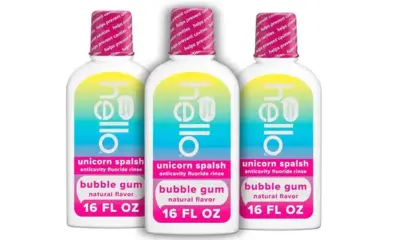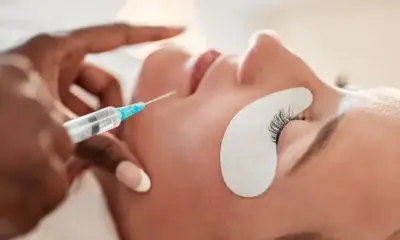Policy & Regulation
U.S. Regulatory Update: MoCRA, PFAS, Lead in Cosmetics, and Formaldehyde Restrictions

U.S. Cosmetics Regulatory Update: Key Changes Shaping the Future of Beauty
As we look ahead to 2025, the U.S. cosmetics industry is undergoing significant regulatory changes. With increasing global regulations and the implementation of new laws like the Modernization of Cosmetics Regulation Act (MoCRA), brands must stay informed. The U.S. Cosmetics Regulatory Update focuses on how the industry will adapt to this evolving landscape.
U.S. Cosmetics Regulatory Update: A More Complex Future
The U.S. Cosmetics Regulatory Update reveals that the industry is set to experience growing complexity in regulations. With a blend of federal and state-level regulations, businesses in the beauty sector must navigate a challenging terrain. New guidelines, safety standards, and ingredient bans will redefine how cosmetics are developed, marketed, and sold.
In the U.S., the regulatory environment is poised to change significantly as both federal and state regulations become stricter. This growing complexity may mirror the European Union’s pre-EC 1223/2009 phase, when each country regulated cosmetic ingredients independently. While this fragmentation caused challenges in the EU, it now appears that the U.S. is heading down a similar path.
The Rise of State-Level Regulations: A Patchwork System
One of the key aspects of the U.S. Cosmetics Regulatory Update is the increasing role of state-level regulations. Without federal preemption, individual states have begun regulating ingredients independently. This results in a patchwork of regulations that can make it difficult for brands to stay compliant.
Similar to the EU’s previous system, U.S. states are passing their own laws regarding banned or restricted ingredients. As more states adopt their own regulations, brands may need to reformulate products to comply with local laws. This shift could force companies to create multiple formulations to sell in different states, adding to the overall complexity.
MoCRA: The Modernization of Cosmetics Regulation Act
The Modernization of Cosmetics Regulation Act (MoCRA) is a pivotal development in the U.S. Cosmetics Regulatory Update. Set to be implemented in 2025, MoCRA will establish a new era for cosmetics regulation in the U.S. As of July 2025, companies will be required to list products in a new portal. Brands must also submit safety substantiation to demonstrate the safety of their products.
Additionally, MoCRA will introduce several significant regulations, including guidelines for Good Manufacturing Practices (GMP), fragrance allergen labeling, and testing methods for asbestos in talc-containing products. Companies must adhere to these new regulations or face penalties, inspections, and potential recalls.
The Impact of MoCRA on Ingredient Transparency and Safety
One of the most important aspects of MoCRA is its focus on ingredient safety. The law mandates that brands substantiate the safety of their products, which will increase transparency in the industry. As consumers demand more transparency and ethical practices, this regulation will encourage brands to prioritize safety, quality, and sustainability.
Formaldehyde and Fragrance Allergen Restrictions
As part of the U.S. Cosmetics Regulatory Update, formaldehyde and fragrance allergen restrictions are set to take effect in the near future. Originally planned for 2024, formaldehyde bans in hair smoothing and straightening products have been delayed until 2025. Similarly, fragrance allergen labeling regulations, also due in 2024, have been postponed until January 2025.
These regulations will impact companies that use formaldehyde or fragrance allergens in their products. As these rules are finalized, brands will need to adapt their formulations and update product labels. Companies must stay informed about these changes to remain compliant and avoid costly penalties.
CARES Act Fees and Color Certification Increases
Another aspect of the U.S. Cosmetics Regulatory Update is the increase in fees for color certification services. Starting December 2024, the FDA will raise its fees for color certification, affecting straight colors, lakes, and repacks of certified color additives. This fee increase will impact manufacturers and may lead to higher production costs for cosmetics brands.
Additionally, the FDA now has the authority to collect user fees from over-the-counter (OTC) product manufacturers through the CARES Act. These fees support the development of an electronic system for the OTC monograph program, which helps ensure the safety and efficacy of OTC products.
The FDA’s Reorganization: A New Focus on Science and Ingredients
In an effort to streamline regulations and improve scientific research, the FDA’s Office of Cosmetics and Colors has moved from the Center for Food Safety and Applied Nutrition (CFSAN) to the Office of the Chief Scientist (OCS). This reorganization is aimed at enhancing strategic leadership and better coordinating regulatory policies across various product categories, including cosmetics.
By focusing more on scientific research, the FDA hopes to improve the regulatory process for emerging ingredients. This shift will likely lead to more integrated regulations, helping brands better navigate ingredient-related rules and enhance their product offerings.
2024 Preview: State Regulations for 2025 and Beyond
In 2024, the U.S. Cosmetics Regulatory Update gave us a preview of what to expect in the years to come. Several states have started regulating ingredients such as per- and polyfluoroalkyl substances (PFAS), lead, and formaldehyde donors. These ingredients are expected to face stricter regulations in 2025.
For instance, California, Washington, and Maryland have already set limits on lead in cosmetics, aligning with the FDA’s approved level for colorants. However, Washington has adopted an especially stringent 1 ppm limit, which could influence other states to adopt similar standards. These regulatory measures focus on consumer safety, especially for people of color, as studies show that harmful chemicals are more prevalent in low-cost cosmetics.
PFAS Regulations: A Complex Challenge for Brands
One of the most significant hurdles in complying with state regulations is the lack of a uniform federal definition for PFAS. States such as California have already introduced their own regulations on PFAS in personal care products. This inconsistency in definitions and regulations makes it difficult for brands to stay compliant, especially since many states have adopted their own definitions.
Looking Ahead: Adapting to a More Complex Regulatory Landscape
As the U.S. cosmetics industry faces an increasingly complex regulatory landscape, it’s important for brands to adapt quickly. The growing focus on safety, sustainability, and transparency will require companies to stay updated on the latest regulations. With the implementation of MoCRA, the rise of state-level regulations, and the increased focus on ingredient safety, cosmetics brands will need to be more proactive than ever before.
By staying informed and complying with new regulations, brands can continue to thrive in an evolving industry. The U.S. Cosmetics Regulatory Update emphasizes the importance of regulatory compliance and staying ahead of emerging trends.
Stay tuned for more updates on the U.S. Cosmetics Regulatory Update and other key developments in the beauty industry.
Explore More News on This Website
For more news and insights into the latest developments in the beauty industry, stay updated by exploring more articles on our website.





















